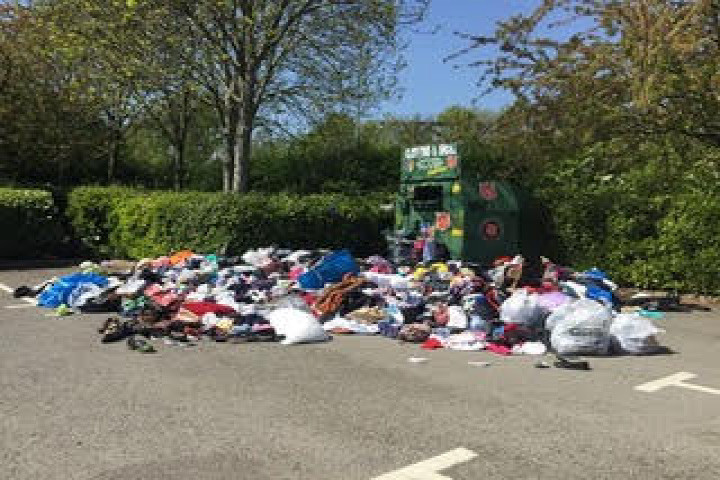
Waste crime is on the increase as individuals and organized criminals target and steal from textile banks in the UK.
The theft of textile banks is a huge problem for recyclers. In some cases the textile banks can be sold for scrap while others are stolen and rebranded. The clothes deposited in the banks are then sold on, in a move some say is linked to organised crime.
Following recent regional enforcement activity The Police has warned that criminal activity involving clothing collected by textile operators is widespread across the UK. Instances of theft from clothing banks mean that clothing intended to fund the recycling sector and key worker green jobs is instead sold for profit by criminals. Criminal gangs are depriving companies of thousands of pounds of income as well as leading to the public becoming disillusioned about the whole ethos of recycling second hand clothes.”
Surguing Textile Bank Crime
Textile banks crime refers to any illegal activity subjected to the textile waste sector. The term covers a diverse range of activities such as;
- burning textiles held in banks;
- financial crime;
- fly-tipping;
- illegal dumping; as well as
- theft from and damage to textile banks.

Crime targeting textile banks can be divided into 3 sections:
Stealing Items clothing
criminals gain access to clothing banks by tampering with original locks and replacing them with their own, effectively claiming ownership of the textile bank itself.
Theft and false trading of textile banks
Criminals even resort to steal clothing banks for their metal value alone or even go as far as to re-labelling the banks under another name or even place them on sites without permission. Members of the Public continue using the banks and depositing items to these clothing banks.
Malicious damage
damage textile banks for example by setting the alight, general graffiti or off loading rubbish into the bank.
In the UK, there are more than 10,000 textile banks In circulation for the general Public use. On average more than 10 banks go missing from the sites which they are deposited and replacing textile banks usually takes up to 2 months leaving textile bank operators at a severe loss.
Unwanted textiles are surprisingly valuable. If these materials were deposited into clothing banks for reuse or recycling generates over GBP 100 million a year in revenue. There is clearly financial incentive for criminals to target clothing banks.
Waste criminals and ensure textile material ends up in the wrong hands.
The rise in instances of theft and vandalism to textile banks urgently seeks for a new approach to waste management and waste crime prevention. Textile operators working with the local community and Councils to help keep a vigilant eye on textile banks should in doing so afford a protective layer and by data gathering and engagement with authorities can help keep criminals at bay.


